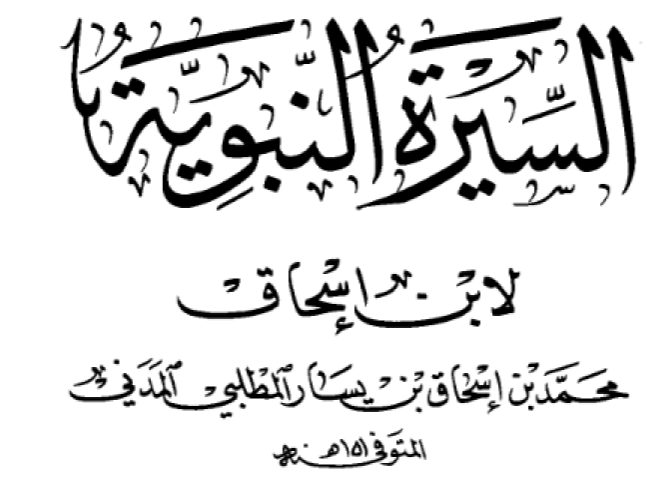Welcome to the Sīrah Defragmentation and Reconstruction (SDR) Project
The October 2023 Release of the Ibrāhīm b. Saʿd Witness
The Sīrah Defragmentation and Reconstruction (SDR) project has released the earliest version of Muḥammad b. Isḥāq’s Sīrah, which was witnessed by Ibrāhīm b. Saʿd b. Ibrāhīm b. ʿAbd al-Raḥmān b. ʿAwf Abū Isḥāq al-Zuhrī (d. 183/799). The reconstructed text consists of a total of 1,799 passages and 225,597 words, although the October 2023 release consists of 1,546 passages and 209,910 words with the additional material to be included by the May 2024 release. The Ibn Saʿd witness was defragmented from over 500 texts located in the premodern corpus.
Each quotation was located using a variety of methods: simple name searches, text searches for common and distinctive word strings in already identified witness material, and with the Targeted Isnād Locater (TIL). The TIL uses a script written in regular expressions (created by Ryan Muther, a PhD candidate at Northeastern University) that looks for name variations and transmissive terms in combinations as they are found in asānid. Work on the Ibn Saʿd witness began in 2015, but it did not begin in earnest until the 2019-2020 academic year when I held fellowships at the Aga Khan University–Institute for the Study of Muslim Civilizations and at University College London-Qatar. The Beta version of the TIL was run looking for Ibn Isḥāq/Ibn Saʿd naming variations in July 2019. It successfully drew quotations from the OpenITI corpus with a 60% accuracy rate.(1) Anargul Essanaliyeva, a research assistant at University College London-Qatar, then formatted these passages using mARKdown(2) in the spring and summer of 2020. Approximately 60% of the material presented in the October release of the Ibn Saʿd witness was located and formatted during this period.
I carried out witness reconstruction using the redaction and commentary produced by ʿAbd al-Mālik b. Hishām (d. 218/833) as a guide. As will be argued in a forthcoming monograph, there is evidence to suggest that Ibn Isḥāq arranged his material into stories and story units but did not format those stories into a clear chronological order, or at least one that he consistently used in each of the extended versions he produced for later witnesses over the course of his life. The Ibn Hishām redaction is based on a copy he received from another early witness to Ibn Isḥāq, Ziyād b. ʿAbd Allāh al-Bakkāʾī (d. 183/799). It is likely that Ibn Hishām moved stories around in his redaction and commentary to reflect the historical sequence of events as he understood them. The reconstruction of the Ibn Saʿd witness is thus “fictive” in that there is no way to know how the original collection of scripts was structured.(3)
In some instances, the quotations attributed to Ibn Saʿd are highly similar to those found in the Ibn Hishām redaction. On those occasions, placement in the Ibn Saʿd reconstruction is relative to those found in the al-Bakkāʾī witness. For many quotations, there is much lower levels of similarity, and I exercised editorial judgement on the placement in the Ibn Saʿd version. In 412 quotations, there was no similarity found between the two texts and I used information found in other premodern Arabic texts, as well as clues from the passages themselves, to provisionally place the quotations. Each passage is followed by a comment and the justifications for placing the passage in each instance is explained in detail. Future iterations of the reader will allow users to directly compare passages across witnesses. For now, the location of similar quotations between witnesses is mentioned in the comments following the passage.
One of the remarkable discoveries of working on the reconstruction of the Ibn Saʿd witness, as well as almost all other witnesses, is the large level of variations in quotations. Traditions recounting the “same” quotation demonstrate that transmitters edited passages, removing and adding material, often with no clear indication as to why. As you read through the Ibn Saʿd witness, pay attention to the variations, easily demonstrated for the reader in fields that highlight differences and similarities.
Once the Ibn Saʿd witness is complete, I plan to turn to the Jarīr b. Ḥāzim witness. Ibn Ḥāzim appears to have acquired extended versions of several of Ibn Isḥāq’s textual divisions before the text acquired by al-Bakkāʾī was composed. It represents the next major collection after that of Ibn Saʿd and early work suggests remarkable differences between it, Ibn Saʿd, and al-Bakkāʾī.
For questions and comments please contact Kevin Jaques.
Endnotes
(1) The accuracy of the script was 100%. It found every naming variation and combination that was input into the script. Accuracy was reduced due to problems in the naming variations themselves. For instance, after the TIL was initially run it was discovered that several texts render the name “Isḥāq” (اسحاق) as “Isḥaq” (اسحق). In order to find a combination of names all possible variations must be included in the script, in other words, it cannot locate what it does not know.
(2) The mARKdown tags were created by Maxim Romanov, many specifically for the SDR project.
(3) The al-Bakkāʾī witness was also presented in the October 2023 release, and as of that date consisted of 1776 passages, 1659 of which were drawn from the Ibn Hishām redaction. Ibn Hishām, in the introduction to his redaction, states that he removed material from al-Bakkāʾī’s copy for a variety of reasons. Many of the defragmented quotations (i.e., material not found in the redaction but in other texts) consist of poems as well as stories that take place after the death of Muḥammad, the very kinds of material Ibn Hishām states that he removed. See ʿAbd al-Mālik b. Hishām, al-Sīrah al-Nabuwīyah, ed. Muṣṭafā Saqqā, Ibrāhīm Ibyārī, and ʿAbd al-Ḥafīẓ Shalabī (Cairo: Muṣṭafā al-Bābī al-Ḥalabī, 1936), vol. 1, 4.
